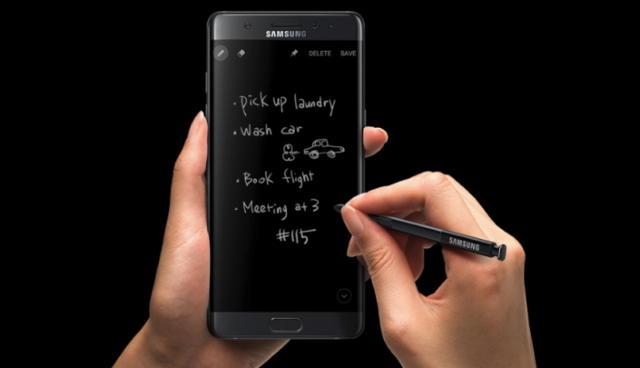Facebook is so big, and its reach so wide, that few rival networks even get out of the starting gates, much less gain the critical mass of members to offer a real alternative. That’s the thing about social networks – people will choose the social network where their friends already are, so that one winning network just keeps growing and growing.
As the current incumbent in this most personal and culturally ingrained of tech services, Facebook has proven itself over and over to be less than forthcoming with its members and less than careful about personal data privacy. Despite that, people stay. Research shows that after the Cambridge Analytica scandal many users left Facebook only to return because they could find nothing to take its place. Facebook is entrenched and seemingly unbeatable.
It’s this impossible situation that got me thinking. Is there any company that could provide a viable alternative to Facebook? I could think of only one. Apple. Here’s why.
SCALE AND REACH
By 2010, Facebook had become fixated on growth at all costs. The value of a social network increases as its membership grows, and chances increase that prospective members will find that their friends are already there. This also creates a barrier to entry to would-be rival networks. Facebook craved that network effect.
Maybe more than anything else, a viable Facebook competitor would need access to that same critical mass of members. Apple already has that, with 1.3 billion iDevices in use around the world. The company successfully leveraged that access to a built-in market with Apple Music, which quickly grew large enough to seriously threaten another incumbent, Spotify. Apple could make it easy for iPhone users to say, “I’ll just use the social network that’s already on my phone.”
INTEGRATION
In a 2015 conversation with my colleague Harry McCracken, Mark Zuckerberg lamented that Facebook had missed the chance to control a mobile operating system to compete with iOS and Android. “One of my big regrets,” he said, “is that Facebook hasn’t had a major chance to shape the mobile operating system ecosystem.” On an iPhone or Android device, Facebook has no more power than any other developer. It needs Apple’s App Store and Google’s Play store to distribute the Facebook, Messenger, Instagram, and WhatsApp apps. Facebook also depends on its apps having full access to the all-important camera in iOS and Android phones.
Like all Apple services, an Apple social network would be deeply embedded into the company’s devices and the Apple operating systems they run. This could ease the onboarding of new members. After all, Apple already knows a lot about its users, including their usage of other Apple services, the friends in their Contacts, and even their credit card number. Control of the operating system would let Apple enforce strong security and data privacy principles.
Then again, Apple might also want to introduce an Android version of its social network, which would not be without precedent given that Apple Music is already cross-platform. But the company doesn’t have to cater to Android users or aspire to reach 2 billion people to build something valuable. An Apple social network might not be a Facebook killer – but it could be a compelling Facebook alternative.
Social networking features might also be integrated within other Apple services, many of which are inherently social. For instance, users might like an easy way to watch Apple TV+ movies together while securely and privately chatting with other folks who are watching at the same time. They might no longer need to go to Facebook to share music. They could be more comfortable talking about sensitive health issues in a social room hosted by Apple than one that an ad-supported service such as Facebook is trying to monetise.
TRUST
Social networks and data privacy are now entangled in consumers’ minds. For years, Apple has positioned itself as the tech company that cares about user privacy. It even went toe-to-toe with the FBI, refusing to help the agency crack the security on the San Bernardino shooter’s iPhone. Apple’s position has always been that a person’s data resides on their device and Apple has no access to it. People feel okay storing sensitive data on their phone because they trust Apple to protect it. They might trust Apple to protect the information they might put on a social network, too.
SOCIAL’S FUTURE
Mark Zuckerberg has said that he believes people will eventually move away from open, public social networks (like Facebook today) and toward smaller private groups. Some people, including Zuckerberg, believe that tomorrow’s social networking experiences may happen within messaging apps – like, for instance, Apple’s Messages app in iOS. Apple has already integrated a variety of functionality into Messages, including Apple Pay. Like the hugely popular WeChat has done, Apple is likely to continue adding more and more features into Messages so that people don’t have to go outside it to get things done. One of these functions could be secure small network rooms where families or groups of friends share their stuff in something that looks like a news feed.
If Apple can hire thousands of people to work on its Project Titan autonomous car project, it could likely dip into its war chest to hire the people needed to build a social network. But why would Apple want to? It probably wouldn’t. Running a mainstream social network is a punishing job. The “digital town square” is a magnet for bullies, haters, wackos, zealots, propagandists, and idiots who have to be constantly monitored. Beyond that, Apple would not make money from the service in the way Facebook has, by harvesting data and selling ads.
Still, there could be upsides for the company. Apple provides attractive and useful services to make buying its devices more appealing. A social network, done well, might end up being a reason for owning an Apple phone, or tablet, or laptop.
Wait – hasn’t Apple tried this before? Yes, with the social music network Ping, which the company launched in 2010, and shut down in 2012. It was so famously unsuccessful that Apple is still stuck with a reputation for being “bad at social”.
But it’s short-sighted to dismiss the idea of a 2019 Apple social network based on Ping’s failure. At the time, Facebook was still on the rise and the world wasn’t yet fully aware of the company’s lust for growth and reckless handling of personal data. In fact, one of the things that held Ping back was that Facebook refused Apple unlimited use of its API (so that Ping users could find out who on Facebook was also using Ping). In short, Ping happened a long time ago in a very different world.
Also, Coldplay’s Chris Martin endorsed and introduced the service, which may have doomed it.
Two years after Cambridge Analytica, the discussion around Big Tech has moved to antitrust issues and the idea of breaking up companies like Facebook into smaller parts. Even if you believe the US federal government would take such a bold step as forcing Facebook to sell Instagram and WhatsApp, that would leave the core Facebook social network itself intact. Washington won’t solve this.
Besides, that’s normally not the way things get done in the tech world. The ground shifts because of head-to-head competition – because a company offers something new and better. Facebook is ready to be disrupted. And even if that looks like an impossible task to most companies, Apple has the resources it would take to give it a serious shot. It’s only a question of whether it has the will.








